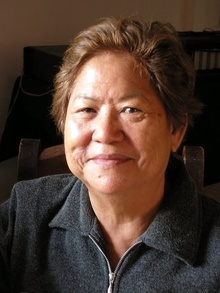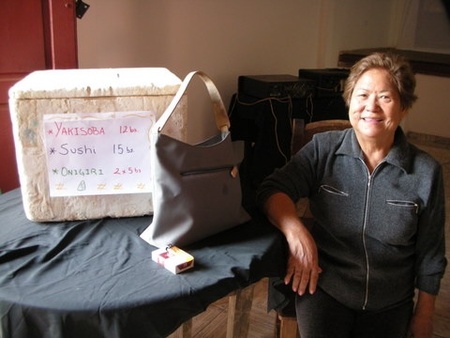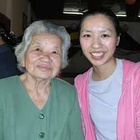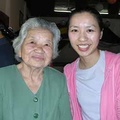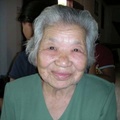70 years old. Born in Okinawa Prefecture.
In 1961, I entered Riberalta at the invitation of my aunt. (My aunt's husband had come down from Peru. By this time, he had already passed away, so my aunt was alone in Riberalta.)
There are four of us: my father, mother, older brother, and myself.
He was 20 years old at the time.
Fly to Riberalta.
As soon as I arrived at the airport, no matter how far I walked, I couldn't see the city.
When my white dress was dirty and my high heels were covered in mud, I asked, "Where is the Plaza?" and was told, "The Plaza is where you are now."
There were only cows, grass and trees around, so I didn't realize that this was a Plaza.
At first, I just wanted to go home.
There were few people who spoke Japanese, which was hard. There were a lot of insects, and I was bothered by mosquitoes and malifei.
I was bitten every day and my legs became swollen and pus came out.
After that, I went to La Paz to get a license to become a hairdresser (for two years).
In La Paz, I met a lot of Japanese people, spoke Japanese, and wasn't bothered by bugs, so it was a nice change of pace.
He then returned to Riberalta and got married.
We had two children.
She works as a hairdresser while helping out at the restaurant "Tokyo" started by her father.
He also started a Japanese language class at his home for second and third generation Japanese.
Simple greetings, names of things, etc.
It took the next 10 years to request JICA volunteers, and in 1988 the long-awaited Japanese language teachers (JICA volunteers) were finally called in.
The result of 10 years of work.
We also received a letter of appreciation from Jaika.
The Japanese came from Peru and settled there on their own.
At that time, the people of Liberalta were poor, so they did not refuse Japanese people and were able to move there.
At first, there was no understanding of Japanese people, and they were envied and harassed, but as the number of people migrating to Japan for work increased, the number of people who were pro-Japan gradually increased, with people thinking, "If I go to Japan, I can earn money and come back."
Up until now, we have also supported people who want to work in Japan.
Even within Liberalta, residents who lived in rural areas were sent out to work.
Despite helping with immigration paperwork free of charge, there were later problems with counterfeit passports and family register extracts being circulated.
There is a lot more garbage now than there used to be.
He started helping out his father at his restaurant, and now he runs a restaurant, mainly cooking Japanese food.
Yakisoba, rice balls, sushi, etc.
And occasionally, I cut the hair of old regular customers when they ask me to.
I've lived in Liberalta for 50 years now.
I will probably return to Japan for travel, but I don't think I'll ever live there.
Every time a Japanese festival is held at the Liberalta Cultural Center, they sell Japanese food.
The sushi and yakisoba are so delicious that they are always sold out by mid-morning.
*Reprinted from the blog " Japanese who crossed the Andes " by a JICA volunteer.
© 2010 Shoko Hibino


